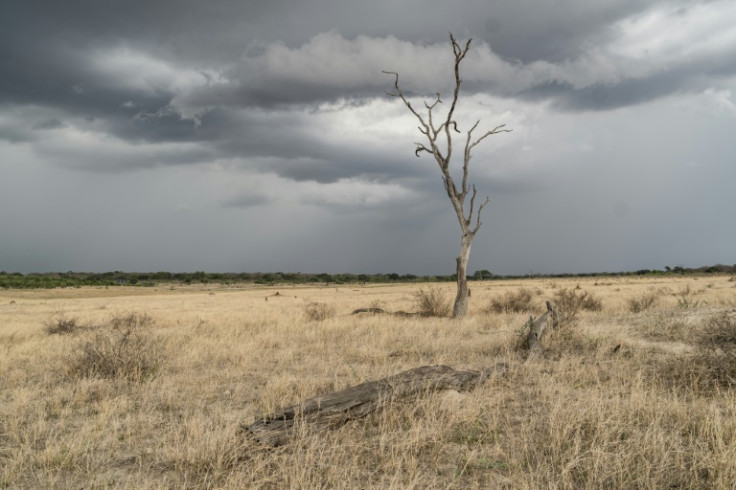
Zimbabwe declared drought a national disaster on Wednesday, with President Emmerson Mnangagwa saying the country needs $2 billion in aid to help millions of people who are going hungry.
A severe dry spell induced by the El Nino weather pattern is wreaking havoc across southern Africa.
"No Zimbabwean must succumb or die from hunger," Mnangagwa told a press conference.
"To that end, I do hereby declare a nationwide State of Disaster, due to the El Nino-induced drought."
Due to poor rains, more than 2.7 million people will not have enough food to put on the table this year, he warned.
This season's grain harvest was expected to bring in just over half of the cereals needed to feed the nation, he said.
The naturally occurring El Nino climate pattern, which emerged in mid-2023, usually increases global temperatures for one year afterwards.
It is currently fuelling fires and record heat across the world.
In southern Africa, Zimbabwe is the third country to declare drought a national disaster after Malawi and Zambia.
The measure allows for more resources to address the crisis.
The drought has also affected electricity production, as Zimbabwe is highly reliant on hydroelectric power.
According to the World Meteorological Organization (WMO), the latest El Nino is one of the five strongest ever recorded and its impact will continue by fuelling heat trapped in the atmosphere by greenhouse gases.
El Nino reached a peak in December but should still result in above-normal temperatures until May over almost all land areas, the WMO said.
Major food growing areas in Malawi, Mozambique, Namibia, Zambia and Zimbabwe received only 80 percent of average rainfall during the mid-November-to-February southern hemisphere summer, the Food and Agriculture Organization (FAO) said, stressing an increased risk of food insecurity.
Rainfall in January and February was the lowest in 40 years, according to the UN.
Zimbabwe's UN resident coordinator Edward Kallon said efforts were underway to mobilise resources and finalise a response plan.
"This crisis has far-reaching consequences across various sectors," Kallon said.
The drought has driven many people to use unsafe water sources, fuelling cholera outbreaks already afflicting several southern African countries, according to the UN Office for the Coordination of Humanitarian Affairs.
El Nino is also forecast to bring heavy rains and flooding in the coming months, heightening the risk of malaria and other diseases.
Meanwhile, unable to source grain from traditional suppliers in Zambia and Malawi, Zimbabwean millers have been importing GMO maize from South Africa.
But climate and agriculture expert Tafadzwa Mabhaudhi of South Africa's University of KwaZulu-Natal, said the country also had limited surplus to export to its neighbours.
"Importing maize also means food price increases, which will impact the food security of poor people, who were already struggling to afford healthy diets," he told AFP.
Last month, small scale Zimbabwean farmers in affected areas told AFP they were already struggling to to feed their families, after their crops failed and food prices skyrocketed.







